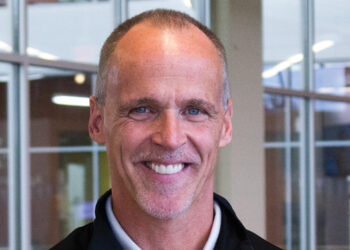How community rec centers are improving compensation for employees amid economic challenges.
In 2022, the Society for Human Resource Management reported the cost of living soared to a 40-year high with U.S. consumer prices jumping by over 9.1%. As a result of inflation, salary.com’s Cost of Living Adjustment Survey Report found 73% of U.S. organizations targeted a payroll budget increase of at least 4% or more.
Lisa Owens, the assistant general manager at The Wave Aquatic & Fitness Center, said her rec center has seen similar trends as their base wage has had a 50% increase over the last two years.
“However, it’s still not on track with the increase to cost of living we have seen locally,” said Owens. “We are hearing from employees they appreciate everything we are doing but it still is not enough. Salary deflation is real and is impacting quality of life as most are taking on multiple jobs, leading to increased stress.”
To make matters more difficult, Owens said the center is also seeing a dramatic increase in the cost of employee retention and benefits. “We are expecting a 30% increase in our health insurance costs in the coming year,” she said. “You add that to the increase we are feeling with our other benefits and employee retention, the impact is being felt in the facility and with our community. I have asked many of my staff what it would take for them to only have one job and the wages they are indicating are out of our reach as they are for most employers locally.”
Ashley Filipp, the chief human resources officer at the YMCA of Pawtucket, said her Y’s employees are seeing similar financial struggles, causing some to leave for higher-paying jobs.
“Compensation and benefits packages are important factors in attracting and retaining talent,” said Filipp. “Affordable health care, savings and retirement, time-off, health and well-being, resources, and flexible work schedules are baseline factors influencing an employee’s choice. As employers, it’s key for us to ask our employees what benefits are important to them so we can best customize our total compensation package.”
Filipp said the YMCA of Pawtucket recently implemented a salary administration plan to ensure they are meeting marketplace demands for higher wages as part of a competitive total compensation strategy.
“Our employees are our greatest resource to invest in the communities and expand programming,” said Filipp. “We must invest in our efforts to retain and develop our staff members. With a tight labor market, attracting and recruiting talent is one of the major issues Ys and community rec centers are facing.”
One strategy the YMCA of Pawtucket uses to retain workers is the Y strives to provide affordable health care to its employees — 80% employer paid and 20% employee paid. Filipp said they recently switched health care providers to maintain affordable rates and balance affordable health care options while finding a way to offset costs.
“The YMCA of Pawtucket is back to its pre-pandemic retirement contribution of 12%,” added Filipp. “We offer free family memberships for all employees and program discounts including up to 60% off childcare. We also support the ongoing development of employees. Tuition assistance is available for those who completed six months of employment with the YMCA of Pawtucket.”
Filipp said younger generations are looking for development opportunities, a clear path in upward mobility within organizations, pay transparency, work flexibility, a commitment to diversity, equity and inclusion, and an organization aligning with their personal values.
Owens said from her experience, pay is the top priority for Gen Zers. However, the ultimate work/life balance is also heavily desired by the age group.
“Health insurance coverage, including what physical and mental health benefits are offered, can also often be a close second for Gen Zers,” said Owens. “They want to see a positive culture along with focus and support of the community. Gen Zers like to see equality and inclusion in all areas, so how can you show that is part of your culture?”
On top of offering more voluntary benefits, an increased 401k match and expanded education credit reimbursement, Owens said they are providing community involvement as paid time. Thus far, reaction from employees has been very positive.
“For example, we host a blood drive every other month and we pay for an employee’s time to donate if they want or if they volunteer at another nonprofit a certain number of hours for paid time,” said Owens. “We live in an area where outdoor recreation is why most choose to be here. We are exploring ways to reimburse employees for gear they may need to be outside or help with the cost of safety devices.”
Through the strategies presented by Owens and Filipp, there are a number of options for improving employee compensation and benefits. Almost all of them can be traced back to a factor all workers are searching for — improved quality of life.
“What can you do operationally to help people find work/life balance?” said Owens. “Well-being and mental health are a priority for people right now, so how can you help them with both? The best thing you can do is talk to your current employees and see what they really need, besides wages. The answers may run the gamut but it will give you the information you need to help with employee retention.”











